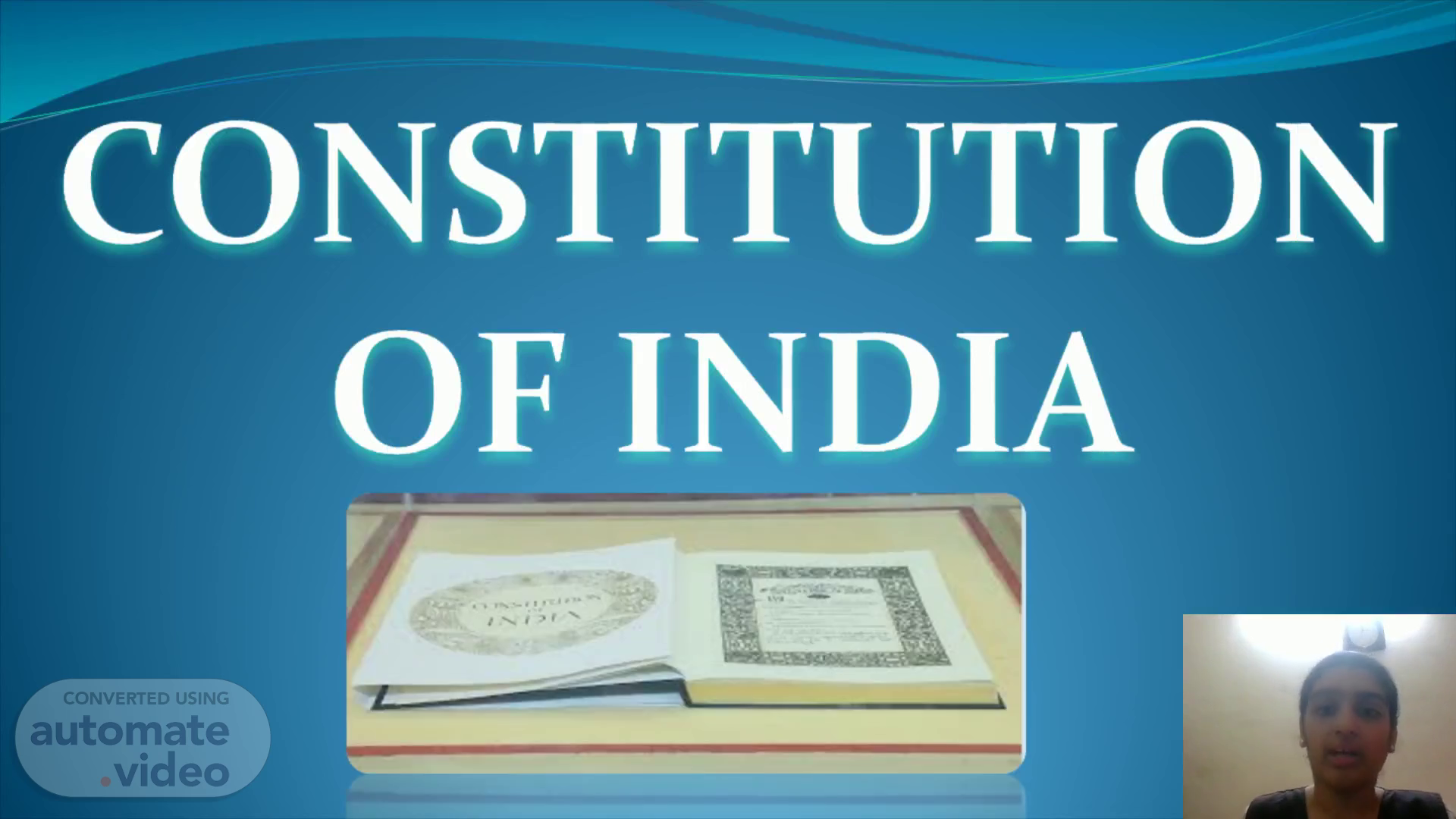Scene 1 (0s)
CONSTITUTION OF INDIA. abstract.
Scene 2 (7s)
TITU ON O THE having solemnly QATE to its Jt.STWE. vx"itical ; to axiivihnl ungy the CWR CONSTITUENT' sixå day Of ENACT GIVE TO CWRS.ELVES THE cc».as-rrrtJTKN. ät]ihil Of the artist Bwhar Ramrnanohar Sinha as •Ram'.
Scene 3 (32s)
Why Do We Need Constitution? In General-We need a constitution to govern a country properly. The constitution defines the nature of political system and the 3 organs of government (executive, legislature and judiciary) functions within the constitution. All the 3 organs of government, including ordinary citizens, derive their power and authority (i.e. Fundamental Right) from the constitution. If they act against it, it is unconstitutional and unlawful. So constitution is required to have authoritative allocation of power and function, and also to restrict them within its limit..
Scene 4 (56s)
The History of Constitution of India 324 BC Emperor Asoka Maurya established constitutional principles, Engraved them in major rocks, pillar and on minor rocks for public to take reference. Also known as Edicts of Ashoka. 1599AD-1765AD 1765AD-1858AD 1858AD-1947AD.
Scene 5 (1m 13s)
East India Company takes total administrative control by gaining right of taxation in Bengal after Battle of Plassey (1757). East India Company takes total unified control over the whole of India from a single center in Calcutta. But its rule ended with the Revolt of 1857. This period of the British Raj was the time when the Constitution of India took shape. Finally Constitution of India, created in independent India by its own free people, was adopted on 26 November 1949 and came into effect on 26 January As we know it and use it today..
Scene 6 (1m 44s)
Constitution of India (1950AD) The Constitution was enacted by the Constituent Assembly on 26 November 1949, and came into effect on 26 January 1950. The date 26 January was chosen to commemorate the Purna Swaraj declaration of independence of With its adoption, the Union of India officially became the modern and contemporary Republic of India and it replaced the Government of India Act 1935 as the country's fundamental governing document. Conscious efforts were made to have consensus on different issues and principles and thereby avoid disagreement. The consensus came in the form of the ‘Objectives Resolution’ moved by Nehru in the Constituent Assembly on December 17, 1946 which was almost unanimously adopted on January 22, 1947. The constitution was enforced with effect from January 26, 1950 from that day India became Republic of India..
Scene 7 (2m 17s)
Dr. Sachchidananda Sinha was the first president (temporary) of the Constituent Assembly when it met on December 9, Later, Dr. Rajendra Prasad became the President of the Constituent Assembly and Dr. Bhimrao Ambedkar became the Chairman of its drafting committee on December 11,1946 ..
Scene 8 (2m 36s)
The Constituent Assembly consisted of 385 members, of which 292 were elected by the elected members of the Provincial Legislative Assemblies while 93 members were nominated by the Princely States. To these were to be added a representative each from the four Chief Commissioners Provinces of Delhi, Ajmer- Marwar, Coorg and British Baluchistan.
Scene 9 (3m 5s)
Federal Features Supremacy of the Constitution Division of power between the Union (central Governments) and State, The existence of an independent judiciary in the Indian Constitution..
Scene 10 (3m 19s)
Structure of Constitution of India:-consists of 1 preamble, 25 parts containing 450 articles, 12 schedules, 2 appendices and 97 amendments to date. Although it is federal in nature it also has a strong unitary bias. Both features are listed below:- Constitution consists of Preamble1 Parts25 Articles450 Amendments97 Appendices2 Schedules12 Fundamental Rights Directive Principles Fundamental Duties.
Scene 11 (3m 32s)
The first words of the Preamble – "We, the people" - signifies that power is ultimately vested in the hands of the People of India. So far the Preamble has been amended only once in 1976 by 42nd amendment (change) which inserted the words Socialism, Secularism and Integrity..
Scene 12 (3m 55s)
A brief description of these concepts are as follows Sovereign - It means free to follow internal and external Policies. Secular - It means no particular Religion is preferred. Socialist - It means no concentration of Power and Money. Democratic - It means rule by elected representative of the People of India. Republic - It means no room for hereditary ruler or monarch ..
Scene 13 (4m 22s)
Presidents of India List President Name Period 26th Jan 1950 to 13th May 1962 Dr. Rajendra Prasad 13th May 1962 to 13th May 1967 Dr Sarvepalli Radhakrishnan 13th May 1967 to 3rd May 1969 Dr Zakir Hussain yd May 1969 to 20th July 1969 Varahagiri Venkata Giri 20th July 1969 to 24th August 1969 Mohammad Hidayatullah 24th August 1969 to 24th August 1974 Varahagiri Venkata Giri 24th August 1974 to 11th Feb 1977 Fakhruddin Ali Ahmed Basappa Danappa Jatti Neelam Sanjiva Reddy 25th July Giani Zail Singh 25th July Ramaswamy Venkataraman Shankar Dayal Sharma Kocheril Raman Narayanan Dr. A.P.J. Abdul Kalam Pratibha Patil Pranab Mukherjee Shri Ram Nath Kovind 11th Feb 1977 to 25th July 25th July 25th 25th 25th July July July 1977 to 1982 to 1987 to 1992 to 1997 to 2002 to 25th July 25th July 25th July 25th July 25th July 25th July 25th July 2007 to 25th July 25th July 2012 to 25th July 25th July 2017 to 1977 1982 1987 1992 1997 2002 2007 2012 2017 Incumbent.
Scene 14 (4m 25s)
HAPPY@.
